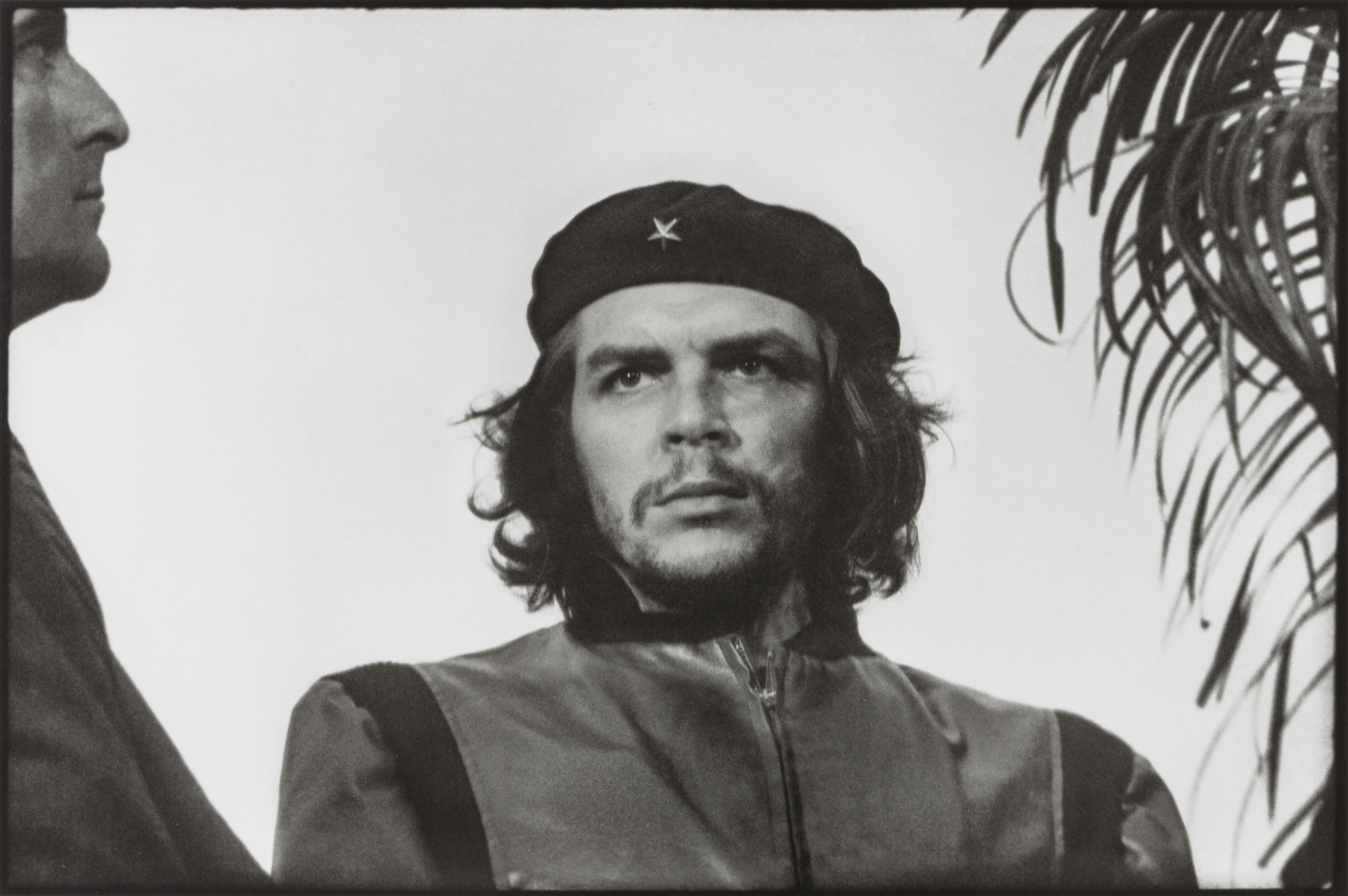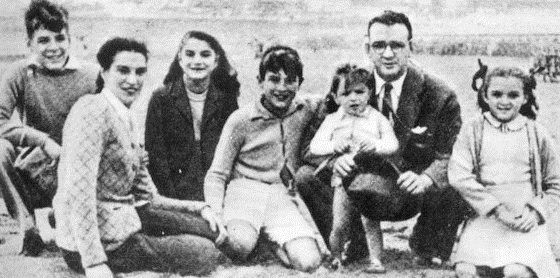|
Che Guevara (photo)
''Guerrillero Heroico'' ( en, "Heroic Guerrilla Fighter") is an iconic photograph of Marxist revolutionary Che Guevara taken by Alberto Korda. It was captured on March 5, 1960, in Havana, Cuba, at a memorial service for victims of the ''La Coubre'' explosion. By the end of the 1960s, the image, in conjunction with Guevara's subsequent actions and eventual execution, helped solidify the leader as a cultural icon.Communists, Capitalists still buy into Iconic Che Photo, Author says by Brian Byrnes, '''', May 5, 2009 Korda has said that at the moment he shot the picture, he was drawn to Guevara's facial expression, which showed "absolute implacability ... [...More Info...] [...Related Items...] OR: [Wikipedia] [Google] [Baidu] |
Che Guevara
Ernesto Che Guevara (; 14 June 1928The date of birth recorded on /upload.wikimedia.org/wikipedia/commons/7/78/Ernesto_Guevara_Acta_de_Nacimiento.jpg his birth certificatewas 14 June 1928, although one tertiary source, (Julia Constenla, quoted by Jon Lee Anderson), asserts that he was actually born on 14 May of that year. Constenla alleges that she was told by Che's mother, Celia de la Serna, that she was already pregnant when she and Ernesto Guevara Lynch were married and that the date on the birth certificate of their son was forged to make it appear that he was born a month later than the actual date to avoid scandal. ( Anderson 1997, pp. 3, 769.) – 9 October 1967) was an Argentine Marxist revolutionary. A major figure of the Cuban Revolution, his stylized visage has become a ubiquitous countercultural symbol of rebellion and global insignia in popular culture. As a young medical student, Guevara traveled throughout South America and was radicalized by the poverty, hunger, ... [...More Info...] [...Related Items...] OR: [Wikipedia] [Google] [Baidu] |
Pablo Neruda
Ricardo Eliécer Neftalí Reyes Basoalto (12 July 1904 – 23 September 1973), better known by his pen name and, later, legal name Pablo Neruda (; ), was a Chilean poet-diplomat and politician who won the 1971 Nobel Prize in Literature. Neruda became known as a poet when he was 13 years old, and wrote in a variety of styles, including surrealist poems, historical epics, overtly political manifestos, a prose autobiography, and passionate love poems such as the ones in his collection ''Twenty Love Poems and a Song of Despair'' (1924). Neruda occupied many diplomatic positions in various countries during his lifetime and served a term as a Senator for the Chilean Communist Party. When President Gabriel González Videla outlawed communism in Chile in 1948, a warrant was issued for Neruda's arrest. Friends hid him for months in the basement of a house in the port city of Valparaíso, and in 1949 he escaped through a mountain pass near Maihue Lake into Argentina; he would not retu ... [...More Info...] [...Related Items...] OR: [Wikipedia] [Google] [Baidu] |
Jorge Masetti
Jorge José Ricardo Masetti Blanco (born 31 May 1929; disappeared 21 April 1964), also known as "Commander Segundo", was an Argentinean journalist and guerrilla leader. Born in Avellaneda, Masetti entered the jungle at Salta and after 21 April 1964 was not heard from again. He was the founder and the first director of the Cuban news agency Prensa Latina, and became the leader of one of Argentina's first guerrilla organizations, the Guevarist People's Guerrilla Army. Reporting in Cuba Jorge Josè Ricardo Masetti Blanco was born in Avellaneda, a city located in the industrial belt formed around the city of Buenos Aires. He was born into a family descended from immigrants who came from the city of Bologna in Italy. In the mid-1940s, he was an active member of the Nationalist Liberation Alliance, an extreme right-wing organization, together with Rodolfo Walsh and Rogelio García Lupo. During the Cuban Revolution he was the only Argentine reporter on the scene in the Sierra Maestra ... [...More Info...] [...Related Items...] OR: [Wikipedia] [Google] [Baidu] |
Simone De Beauvoir
Simone Lucie Ernestine Marie Bertrand de Beauvoir (, ; ; 9 January 1908 – 14 April 1986) was a French existentialist philosopher, writer, social theorist, and feminist activist. Though she did not consider herself a philosopher, and even though she was not considered one at the time of her death, she had a significant influence on both feminist existentialism and feminist theory. Beauvoir wrote novels, essays, biographies, autobiographies, and monographs on philosophy, politics, and social issues. She was known for her 1949 treatise ''The Second Sex'', a detailed analysis of women's oppression and a foundational tract of contemporary feminism; and for her novels, including ''She Came to Stay'' (1943) and '' The Mandarins'' (1954). Her most enduring contribution to literature is her memoirs, notably the first volume, "Mémoires d'une jeune fille rangée" (1958), which has a warmth and descriptive power. She won the 1954 Prix Goncourt, the 1975 Jerusalem Prize, and the 1978 ... [...More Info...] [...Related Items...] OR: [Wikipedia] [Google] [Baidu] |
Jean-Paul Sartre
Jean-Paul Charles Aymard Sartre (, ; ; 21 June 1905 – 15 April 1980) was one of the key figures in the philosophy of existentialism (and phenomenology), a French playwright, novelist, screenwriter, political activist, biographer, and literary critic, as well as a leading figure in 20th-century French philosophy and Marxism. His work has influenced sociology, critical theory, post-colonial theory, and literary studies, and continues to do so. He was awarded the 1964 Nobel Prize in Literature despite attempting to refuse it, saying that he always declined official honors and that "a writer should not allow himself to be turned into an institution." Sartre held an open relationship with prominent feminist and fellow existentialist philosopher Simone de Beauvoir. Together, Sartre and de Beauvoir challenged the cultural and social assumptions and expectations of their upbringings, which they considered bourgeois, in both lifestyles and thought. The conflict between oppressive, ... [...More Info...] [...Related Items...] OR: [Wikipedia] [Google] [Baidu] |
Existentialism
Existentialism ( ) is a form of philosophical inquiry that explores the problem of human existence and centers on human thinking, feeling, and acting. Existentialist thinkers frequently explore issues related to the meaning, purpose, and value of human existence, and the role of personal agency in transforming one's life. In the view of an existentialist, the individual's starting point is phenomenological, grounded in the immediate direct experience of life. Key concepts include " existential angst", a sense of dread, disorientation, confusion, or anxiety in the face of an apparently meaningless or absurd world, and also authenticity, courage, and human-heartedness. Existentialism is associated with several 19th- and 20th-century European philosophers who shared an emphasis on the human subject, despite often profound differences in thought. Among the earliest figures associated with existentialism are philosophers Søren Kierkegaard and Friedrich Nietzsche and novel ... [...More Info...] [...Related Items...] OR: [Wikipedia] [Google] [Baidu] |
The Times
''The Times'' is a British daily national newspaper based in London. It began in 1785 under the title ''The Daily Universal Register'', adopting its current name on 1 January 1788. ''The Times'' and its sister paper ''The Sunday Times'' (founded in 1821) are published by Times Newspapers, since 1981 a subsidiary of News UK, in turn wholly owned by News Corp. ''The Times'' and ''The Sunday Times'', which do not share editorial staff, were founded independently and have only had common ownership since 1966. In general, the political position of ''The Times'' is considered to be centre-right. ''The Times'' is the first newspaper to have borne that name, lending it to numerous other papers around the world, such as ''The Times of India'', ''The New York Times'', and more recently, digital-first publications such as TheTimesBlog.com (Since 2017). In countries where these other titles are popular, the newspaper is often referred to as , or as , although the newspaper is of nationa ... [...More Info...] [...Related Items...] OR: [Wikipedia] [Google] [Baidu] |
Malecón, Havana
The Malecón (officially Avenida de Maceo) is a broad esplanade, roadway, and seawall that stretches for 8 km (5 miles) along the coast in Havana, Cuba, from the mouth of Havana Harbor in Old Havana, along the north side of the Centro Habana neighborhood and the Vedado neighborhood, ending at the mouth of the Almendares River. New businesses are appearing on the esplanade due to economic reforms in Cuba that now allow Cubans to own private businesses. History Construction of the Malecón began in 1901, during temporary U.S. military rule."HISTORIA DEL MALECON HABANERO", Tania Díaz Castro, 26 March 2010, ''Primavera Digital'' The main purpose of building the Malecón was to protect Havana from the sea.< ... [...More Info...] [...Related Items...] OR: [Wikipedia] [Google] [Baidu] |
Colon Cemetery, Havana
El Cementerio de Cristóbal Colón, also called La Necrópolis de Cristóbal Colón, was founded in 1876 in the Vedado neighbourhood of Havana, Cuba to replace the Espada Cemetery in the Barrio de San Lázaro. Named for Christopher Columbus, the cemetery is noted for its many elaborately sculpted memorials. It is estimated the cemetery has more than 500 major mausoleums. Before the Espada Cemetery and the Colon Cemetery were built, interments took place in crypts at the various churches throughout Havana, for example, at the Havana Cathedral or Church Crypts in Havana Vieja. Overview The Colon Cemetery is one of the most important cemeteries in the world and is generally held to be one of the most important in Latin America in historical and architectural terms, second only to La Recoleta in Buenos Aires. Prior to the opening of the Colon Cemetery, Havana's dead were laid to rest in the crypts of local churches and then, beginning in 1806, at Havana's newly opened Espada Ceme ... [...More Info...] [...Related Items...] OR: [Wikipedia] [Google] [Baidu] |







